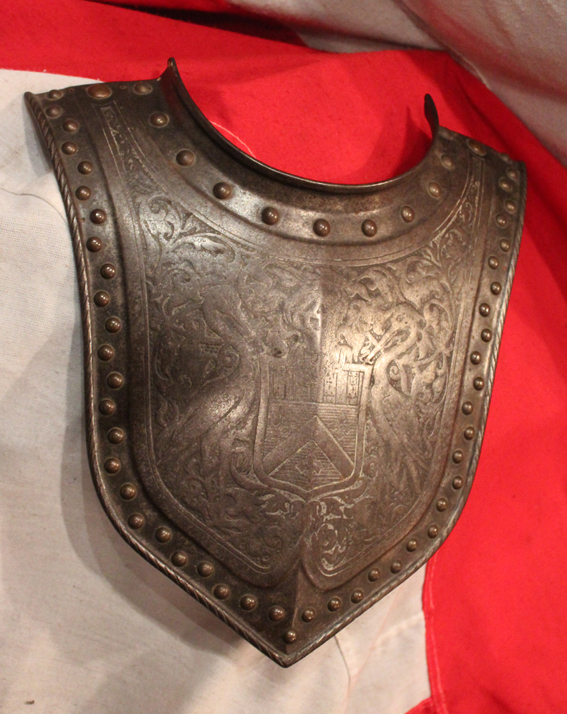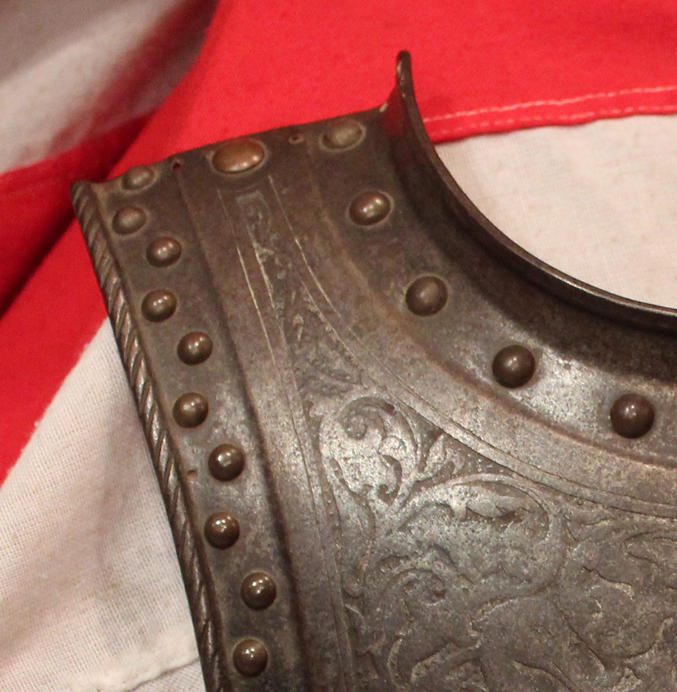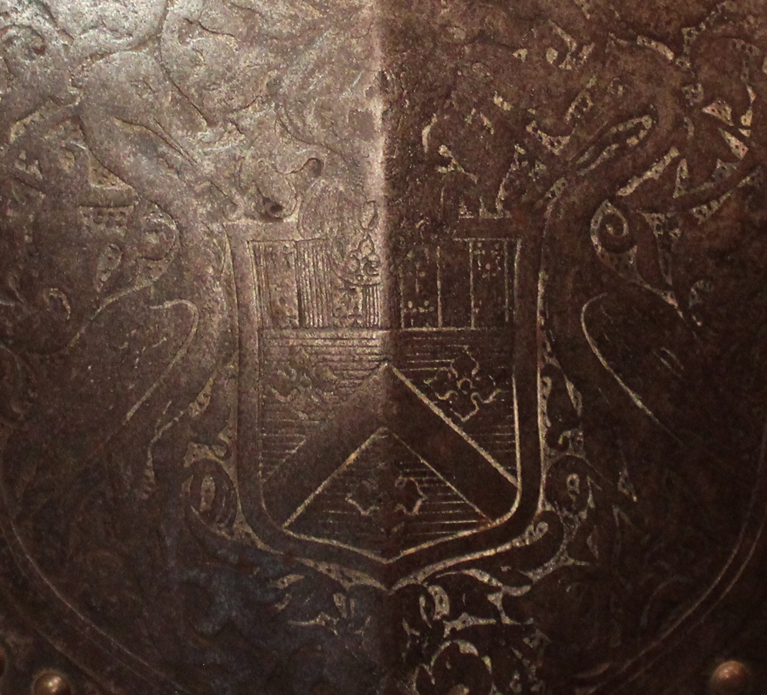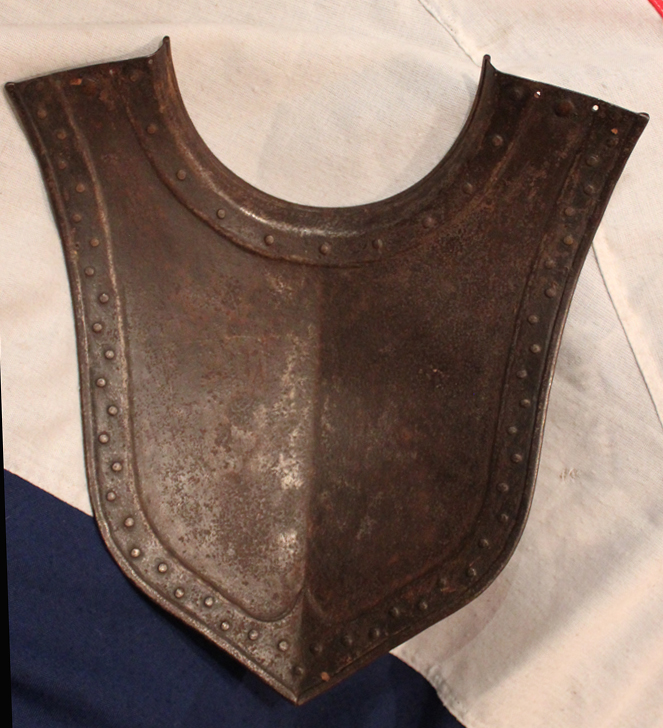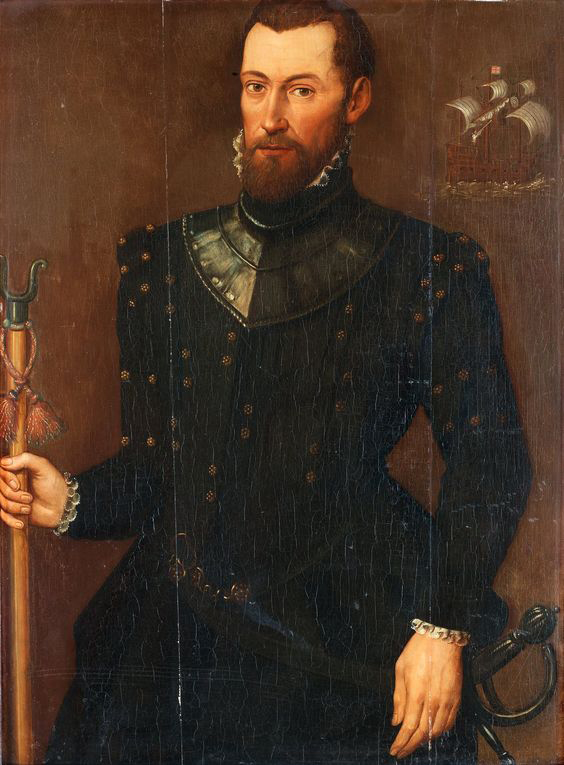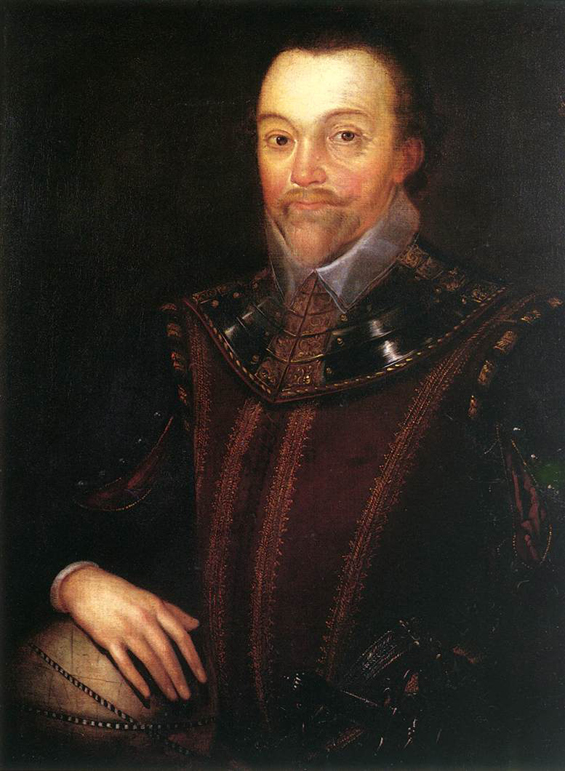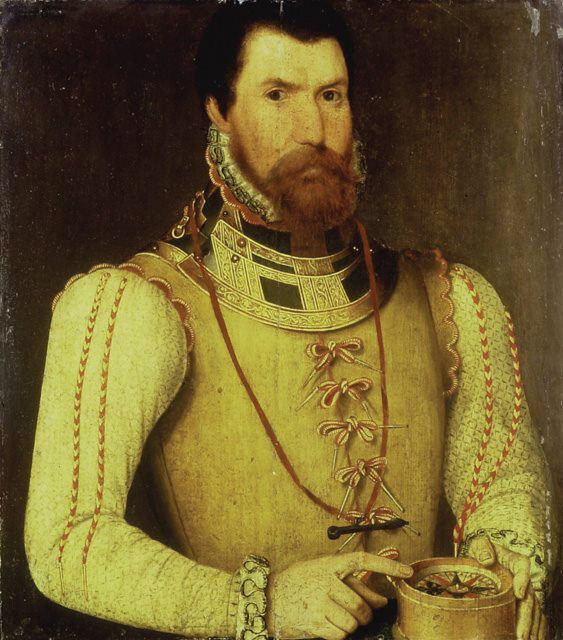A Fine Renaissance Heraldic ‘Grand Tour’ Armour. A Gorget of a Duke. A Last Vestige Of The Of Knightly Armour Worn. When All Form of Steel Armour Was No Longer Used in Combat The Final Representation Of A Chivalrous Knight Was His ‘Gorget’ {Neck Armour}
A fabulous object d’art from the early ‘Grand Tour’ era, when young members of the nobility travelled around Europe and acquired classical art, original antiquities and all form of stunning ‘Grand Tour’ pieces. The were representations ‘after’ the original classical antiques, from Ancient Rome, Greece and the Italian Renaissance
A most beautiful antique ‘Grand Tour’ representational piece of highest status dress armour, in the 16th century style, but likely made in the 18th century or early 19th century, probably in Paris, for such as the younger members of families of a nobility such as earls or dukes, visiting Paris, searching for object d’arte and antiquities, just after the Napoleonic Wars.
It was in this era that great Continental tourists and travellers such as Lord Byron, Percy Bysshe Shelley, his wife, Mary, and John William Polidori, travelled Europe and took up residence in palatial villas on the Swiss and Italian lakes. It was during such a tour, by those just mentioned, who were in their ‘Grand Tour’ years, while in their villa on Lake Geneva, in the Year Without Summer’ in 1816, wrote, one stormy night, The Vampyre {by Polidori} and Frankenstein, The Modern Prometheus, {by Mary Shelley}. Bearing in mind this was merely by means of a distraction from the poor weather. Can you imagine, the stratospheric talent of such like, that two of the greatest origin stories of horror, ever written, and still as read and performed in the performing arts, as much today as they were 200 years ago, were created in the same house, by two English travellers, at the very same time, and as a mere ‘distraction’ due to boredom.
It bears a most fine etched heraldic ducal crest, composed of a pair of cranes bearing a five bar face guarded demi-profile dukes helmet, mounted above a shield with chevron below four ermine panels, with three, four lobed devices about the chevron on both sides. The entire rim bears brass headed steel rivets and two shoulder centred large brass rivets that once held leather straps. We show in the gallery several portraits of Elizabethan nobles all adorned in their armour gorget over fine tunics of velvet or leather. The gorget was the last remaining symbol of knightly armour universally worn either at court or in combat by nobles in the Elizabethan period Although other elements of armour could be worn, such as arm defences, in accompaniment as the wearer saw fit.
In the High Middle Ages, when mail was the primary form of metal body armour used in Western Europe, the chain mail coif protected the neck and lower face. During the 14th century as more plate armour appeared to supplement mail, the Bascinet helmet incorporated a mail curtain called the Aventail which protected the lower face, neck and shoulders. A separate mail collar called a "pisan" or "standard" was sometimes worn under the aventail as additional protection. Towards the end of the 14th century, threats including the increased penetrating power of the lance when paired with a lance rest on the breastplate made more rigid forms of neck protection desirable.
One solution was a standing collar plate worn over the aventail and separate from the helmet, which was wide enough for the helmet to move around in so that the man-at-arms could turn his head. Through the early 15th century, gorget plates were integrated into the helmet itself to form the great bascinet. Other forms of helmet such as the sallet which did not protect the lower face and throat with plate were paired with a separate bevor, and the armet was often fitted with a wrapper that included gorget lames protecting the throat. During this time, the mail standard was still used.
At the beginning of the 16th century, the gorget became fully developed as a component of plate armor in its own right. Unlike previous gorget plates and bevors which sat over the breastplate and required a separate mail collar to fully protect the neck from gaps, the developed gorget was worn under the back and breastplate and was intended to cover a larger area of the neck, nape, shoulders, and upper chest, since the upper edges of the cuirass had become lower than before. The gorget served as an anchor point for the Pauldrons, which either had holes to slide over pins projecting from the gorget, or fastened to the gorget by straps and buckles. The neck was protected by a high collar of articulated lames, and the overall gorget consisted of front and back pieces which were hinged at the side so it could be put on and taken off. Some helmets had additional neck lames which overlapped the gorget, while others fitted tightly to the top of the gorget so that there would be no gap between them.
By the 17th century there appeared a form of gorget with a low, unarticulated collar and larger front and back plates which covered more of the upper chest and back. These were not worn with a breastplate as part of a full harness, but instead were worn over civilian clothing or a Buff coat. Some gorgets of this period were "parade" pieces that were beautifully etched, gilded, engraved, chased, embossed, or enamelled at great expense. Gradually the gorget became smaller and more symbolic, and became a single crescent shape worn on a chain, which suspended the gorget ever lower on the chest so that the gorget no longer protected the throat in normal wear. It is one of the more unusual elements of the arms and armour collecting field that 18th and 19th century fine etched armour, in the earlier styles of the 16th century, can be prized the same, or even more highly than the earlier originals that they were based upon.
In the ‘Grand Tour’ era of 19th century France such pieces of fine art were created for the highly classical ‘after the antique’ market. Such as gilt bronze miniature copies of ‘Napoleons’ column in Place Vendome, and small yellow simulated marble versions of Ancient Greek and Roman columns and arches, and architectural features, and sometimes whole structures, such as Cleopatra’s Needle. Bronzes and marbles ‘after the antique’ of busts of Roman Emperor’s, and elegant statuary. Companies such as Granger of Paris, that worked in the 1840's, created wonderful miniature suits of armour, mounted on horse armour or free standing, and they are of incredibly detailed quality. Such pieces by Granger are in such incredible demand, by collectors or interior decorators, that can they achieve values in the tens of thousands of pounds, even approaching six figures today, and for most that are no more than two feet or around 50 cms high complete. Wondrous full size armour was also created, such as extravagant armour helmets from the Renaissance, the designs made fore the kings of France in the 16th century. Also shields, gauntlets, and gorgets exactly as this fabulous piece. That were ideal for classical art displays and interior décor of the finest Georgian country estates, and the glorious Palladian terraced mansion houses in the cities, such as London, Edinburgh, Bath and Brighton.
Size 14 inches x 12 inches.
Code: 20436
1450.00 GBP

